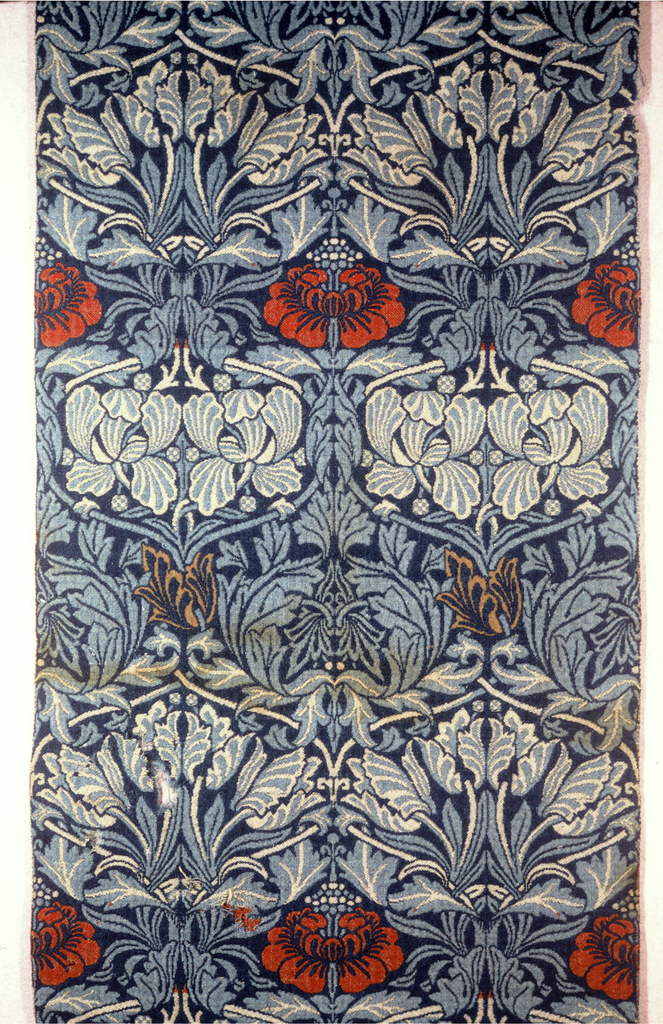William Morris’s The Wood Beyond the World (1894) relates the adventures of Golden Walter, a man who seeks to escape his mundane life and sets out on a sea voyage, eventually gaining control of the kingdom of Stark-Wall and the love of a beautiful maiden. The book was published by the Kelmscott Press, a private...
To celebrate the opening of Saturated: The Allure and Science of Color (May 11, 2018-January 13, 2019), Object of the Day this month will feature colorful objects from the exhibition. This wallpaper is a 1970s print of an 1879 design by William Morris, in a color combination he may have found shocking. Morris is often regarded as...
Whatever would William Morris think? How would he feel seeing how this clever sidewall takes his beloved wallpaper design (the first he ever created) and stylizes it into a series of dots? Whether it brings to mind the Ben Day dots used in comic books or an LED display, the result seems to have been...
Leather hangings were a popular way to decorate walls in Europe in the 18th-century. They were often called Spanish leathers because they originated in Spain in the 17th century, but these early hangings were simply painted. As the popularity of leather hangings increased in the Netherlands and England, it became more popular to emboss the...
William Morris wallpapers are quite extraordinary on several counts. Morris designs are all quite striking, even the patterns printed in a single color. Morris started designing wallpapers in the 1860s and most of these patterns are still being produced today. That says a lot about the appeal of his designs. Cooper Hewitt collection contains most,...
Tulip and Rose, designed by William Morris (1834 – 1896) for Morris & Co., is exemplary of Morris’ goals for the Arts and Crafts movement. The floral design was created with five colors (navy blue, ice blue, red, white and yellow) in a tight pattern of stylized curving leaves and vines of white and light...
This paper focuses on the exotic pomegranate plant, which is native to Persia (present-day Iran). Persian was introduced in 1895 and is woodblock printed in six colors. It was a common design motif to show the life cycle of plants in floral wallpapers. The densely woven pattern containing the pomegranate fruit, stylized floral and scrolling...






